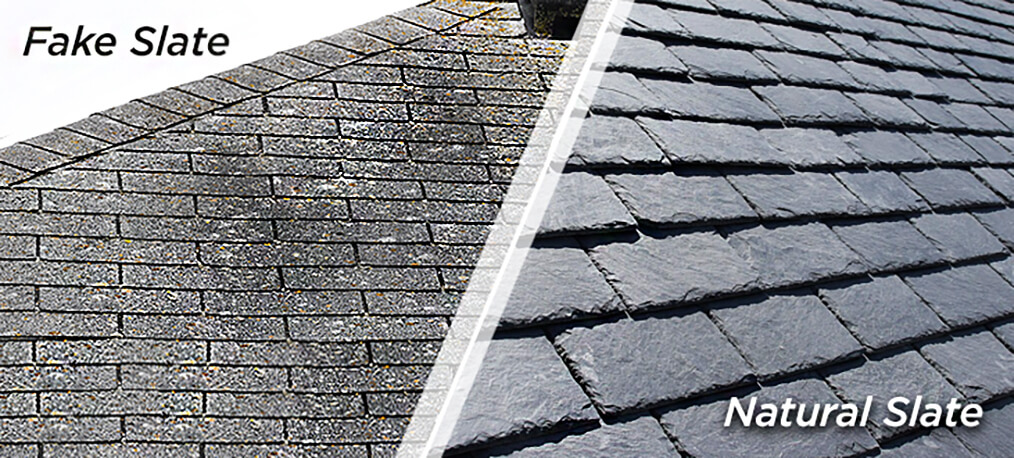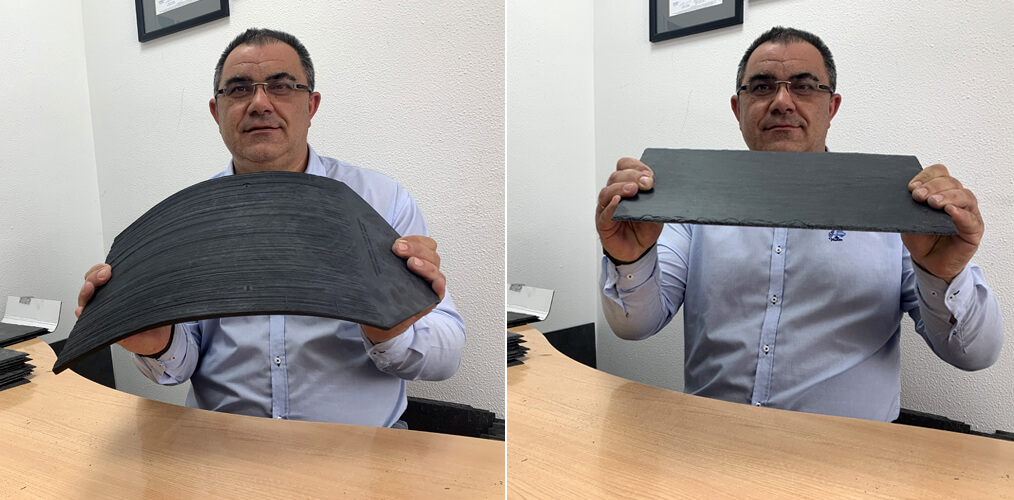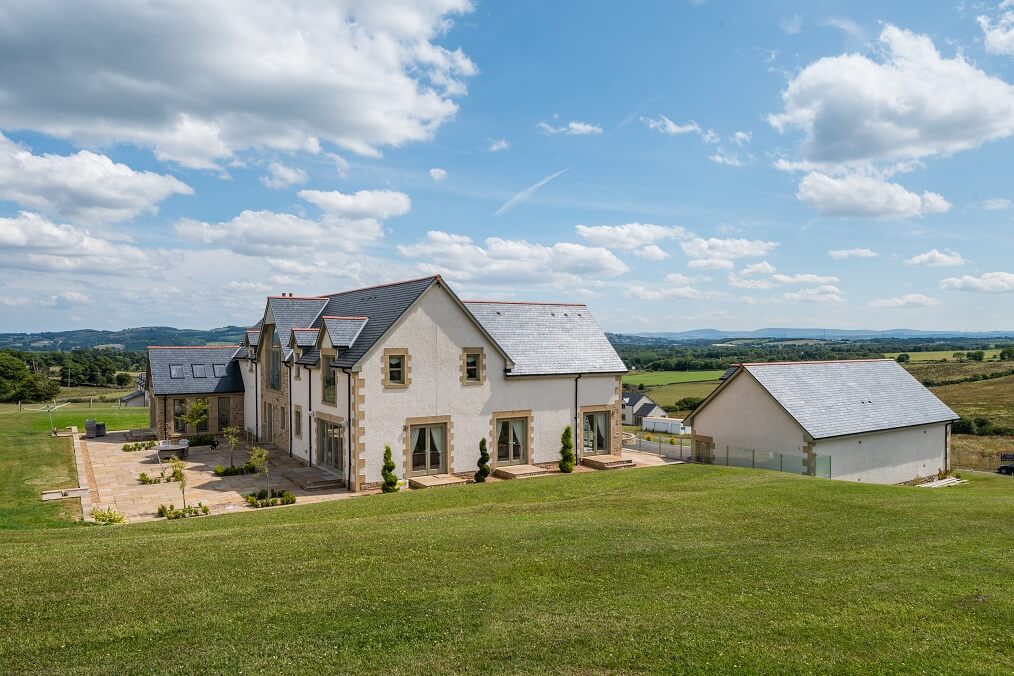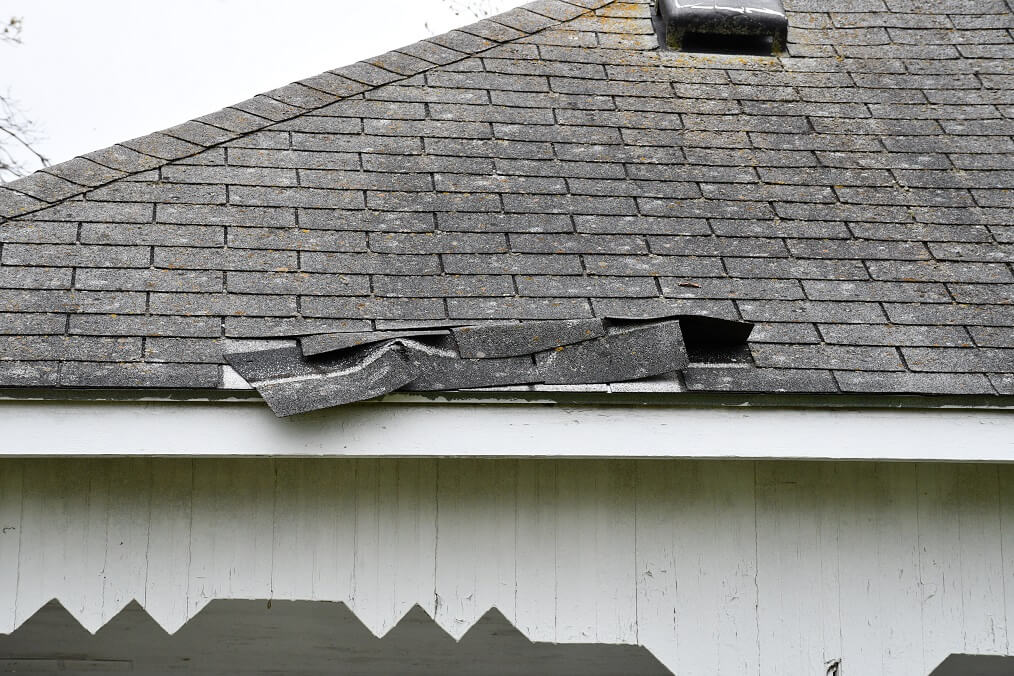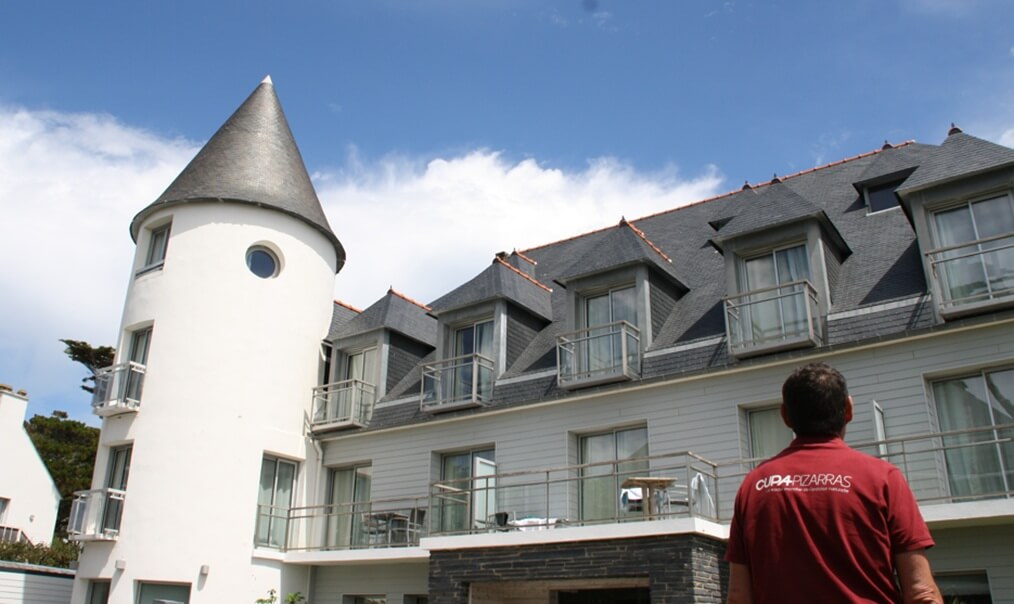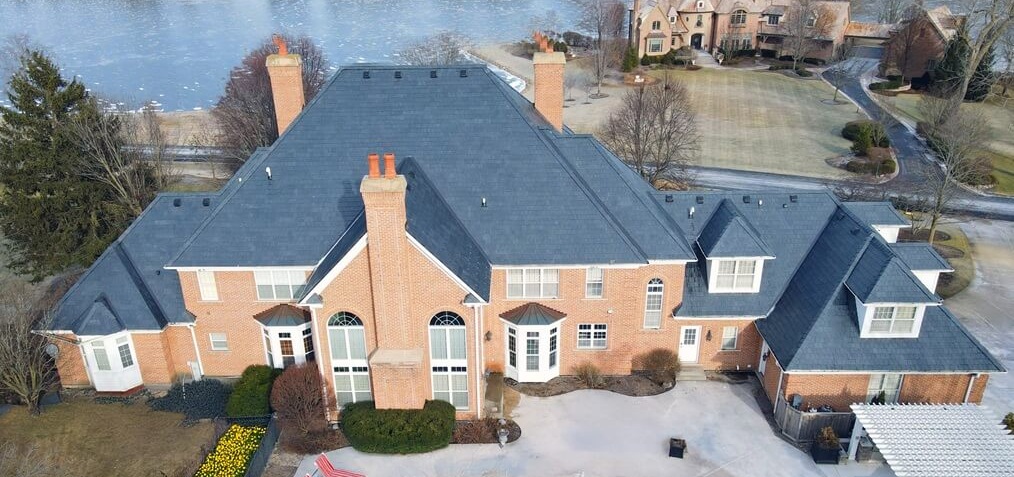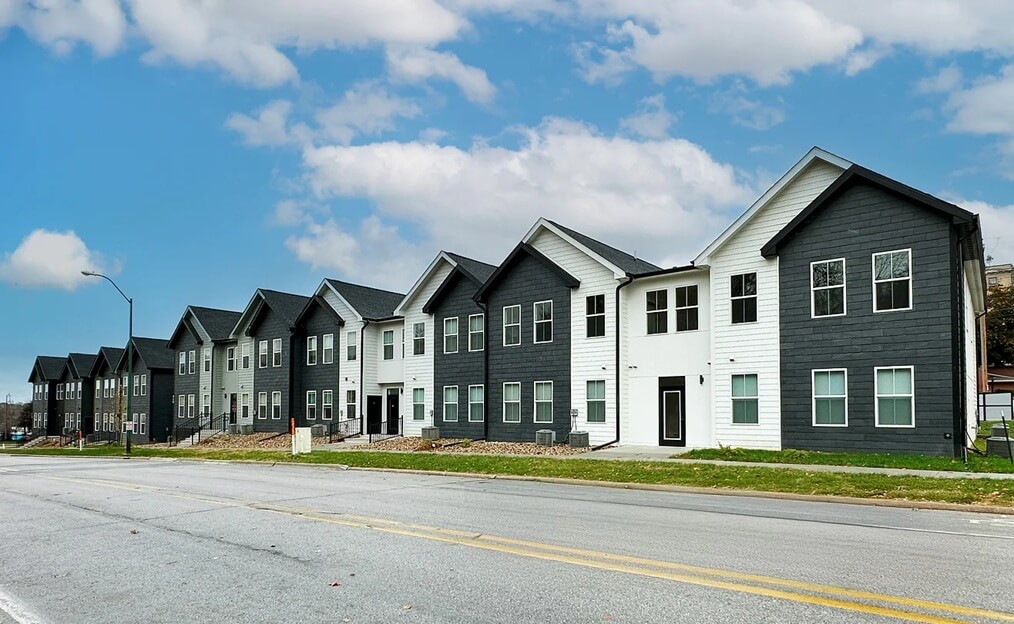Natural Slate; the only kind of slate
What comes to mind when you hear the word ‘slate’? When you look up the word ‘slate’ it’s stated, by definition, as a natural material and includes the words ‘rock’ or ‘stone’.
For centuries, natural slate has been used as a roofing material. However, over the past few decades, artificial and synthetic alternatives have appeared in the market. These products are typically composed of fiberglass, plastic, recycled paper products, polymers, and a number of other materials – claiming to be ‘slate’.
Fake vs natural slate. The difference is plain to see
Joseph Jenkins, Slate Roofing Contractors Association’s (SRCA) Executive Director and author of the ‘Slate Roof Bible’ lists some of the main advantages of natural slate compared to artificial shingles:
Appearance, longevity, beauty, natural, slate is recyclable.
Clayton Hardee, estimator at Above All Roofing, added more:
The biggest advantage is that natural slate will always be available and repairable. With synthetic slate, if the company doesn’t sell enough of the material, they will discontinue the product and we won’t be able to get more.
As you can see, there are significant differences regarding the performance of natural slate versus ‘synthetic slate’. Clayton Hardee stressed:
The quality of synthetic slate can’t be compared to natural slate. We have seen some roofs epically fail and become very brittle. They also fade significantly.
Jenkins also lists some common quality issues that can be found in ‘synthetic slates’: “unexpected early failure, curling, falling apart, fading in a patchy manner, and appearance loses its attractiveness rapidly”.
No artificial material can reach the unmatchable properties of a natural slate. Just as a rock is capable of enduring extreme climate (extreme heat, heavy snowfall, and excessive rain), slate can withstand the heat, snow, and moisture without fading, becoming brittle or falling apart.
Natural slate roof blends with the environment
Furthermore, slate is classified in the building code as non-combustible (will not burn), as stated and certified by the international standard ASTM E136.
Joseph Jenkins opinion is crystal clear:
There is no such thing as “synthetic slate.” There is fake slate, artificial slate, faux slate, and slate look-alikes. When manufacturers refer to their imitation material as “slate,” they are implying a false comparison that misleads consumers and undermines and damages the natural slate industry.
A damaged shingle roof. Something that may happen sooner than later.
Tom Stortz, the fifth generation of Stortz Tools, a company founded in 1853, states it in his article from 2018:
The slate industry is being out marketed by synthetic slate manufacturers who have deep pockets and are back by giants in the industry. Homeowners are getting an inferior product that is being marketed in a superior fashion. It’s a sad state of affairs that this type of material is being marketed as slate because it is far from the truth.
In conclusion, the original is always better than the copy. When choosing slate for your roof or façade, choose natural slate – the only kind of slate.


